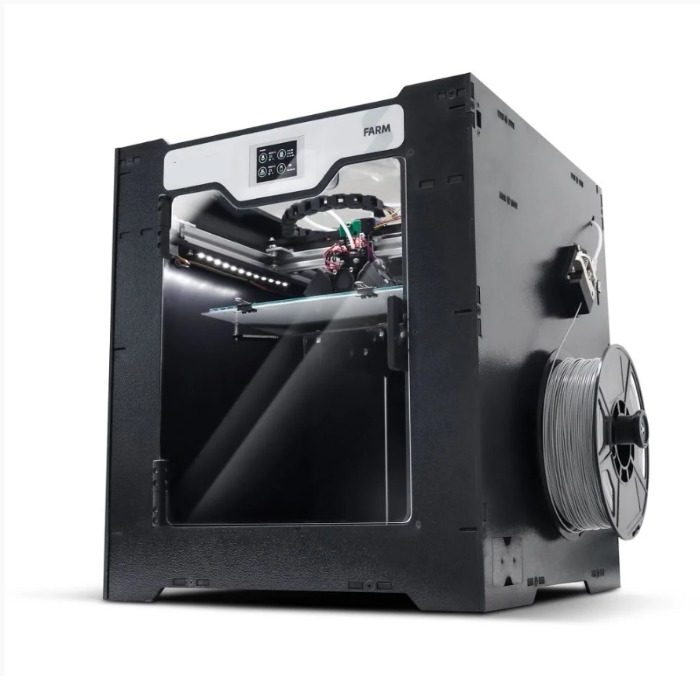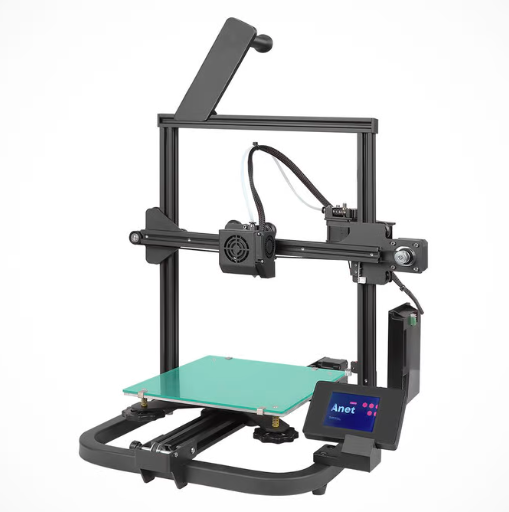Compare FARM vs A8 V2
Comparison between the best 3D printers
Choose the best 3D printer at the best price. The cheapest 3D printers are here.
Buy a 3D printer here with 3D Fila.
 |
 |
|
| Model | FARM |
A8 V2 |
| Printing Material | Filament | Filament |
| Buy Filament for Sethi 3D FARM | Buy Filament forAnet A8 V2 | |
| Estimated price | $1127,00 | $129,00 |
| Manufacturer | Sethi 3D | Anet |
| Release Year | 2021 | 2021 |
| Print Volume [mm] | 240x240x240 | 220x220x250 |
| Printer Size [mm] | 550x42x500 | 428x441x486 |
| Weight [kg] | 15,7 | 6,2 |
| Power Loss Recovery | YES | NO |
| Enclosed printer | YES | NO |
| Bed Leveling | Automatic | Manual |
| Filament End Sensor | YES | NO |
| Bed type | Heated | |
| Power supply system | Bowden | Bowden |
| Standard nozzle | 0,4 | 0,4 |
| Maximum Nozzle Temperature [°C] | 270 | 230 |
| Maximum Bed Temperature [°C] | 120 | |
| Maximum printing speed [mm/s] | 80 | 150 |
| Filament holder | YES | YES |
| Camera for supervision | NO | NO |
| Recommended filaments | PLA, PETG, Tritan, Flex, ABS | PLA |
| Recommended slicers | Cura, Simplify, Slic3r | Cura, Simplify, Slic3r, IdeaMaker |
| Maximum Resolution [mm] | 0,1 | |
| Processor | ||
| Display | Touchscreen TFT | Display touchscreen 2,8'' |
| Power Supply | 450 W | 110/220V / 250W |
| Connectivity | USB | SD / USB |
| Operating systems | Windows, Mac, Linux | Windows, Mac, Linux |
| Date of registration in the system | 2022-10-11 | 2022-11-10 |
| Release date | 2021 | 2021 |
| Extra features | Sethis Farm printer offers a generous 240 x 240 x 240 mm print area, ideal for large projects. Its intuitive touchscreen display makes it easy to operate, while the intelligent sensor prevents problems by detecting filament shortages or jams. Its power recovery feature allows you to resume printing after interruptions. It stands out for its 9-point optical auto-leveling and high-performance heated bed, ensuring accuracy and versatility on different materials. Its 32-bit electronics and silent drivers promote a smooth and efficient experience. In addition, the Farm has a closed cabinet, expanding the range of usable polymers, and a turbo cooling system to speed up the process between prints. The machine also offers practicality with a storage drawer and simplified software updates. | The Anet A8 V2 is a Cartesian-XZ type 3D printer with a build volume of 220 x 220 x 250 mm, Ender 3 design and V-slot assembly. It has a 32-bit motherboard and touchscreen interface, promising ease of use. It uses open source firmware and has thermal failure protection. It stands out for its cable organization and the absence of a heated bed, focusing on energy savings and PLA printing. It comes with an external power adapter, aiming at greater safety, especially for beginners and educational use. |
| Support for multiple colors and materials (AMS and CFS) | NO | NO |
Notes * |
||
| Cost-benefit | 6 / 10 | 6 / 10 |
| Hardware | 3 / 10 | 0.6 / 10 |
| Tela | . | . |
| Print volume | 3 / 10 | 3 / 10 |
| Performance | 0 / 10 | 1 / 10 |
Conclusion |
| In comparing the Sethi 3D FARM and Anet A8 V2 3D printers, several key factors emerge that can help potential buyers make an informed decision based on their needs and budget. The Sethi 3D FARM stands out for its superior features, including a larger build volume, automatic bed leveling, power loss recovery, and an enclosed design. These characteristics enhance the machine’s versatility and reliability, particularly for complex or large prints. The inclusion of advanced safety features, such as a filament end sensor and high maximum temperatures, make it a more robust option for diverse printing materials. Moreover, its touchscreen interface, along with supporting various slicers, adds to user convenience. On the other hand, the Anet A8 V2, although more affordable, lacks several features that could be crucial for more demanding applications. Its manual bed leveling and the absence of power recovery may lead to more user intervention, making it potentially less suitable for long, unattended prints. Its smaller print volume and reliance on PLA could limit creative projects. However, its lower price point and simplicity might appeal to beginners or those on a strict budget focusing primarily on basic PLA printing. Ultimately, the choice between these two printers will depend on the user’s specific needs. For those seeking advanced functionality and higher reliability in their 3D printing ventures, the Sethi 3D FARM presents a compelling option. Conversely, for hobbyists or beginners looking to experiment with 3D printing at a lower cost, the Anet A8 V2 can serve as an adequate starting point. However, considering the varying features and capabilities, the cost-benefit analysis suggests that those serious about their 3D printing projects may find greater value, despite the higher investment, in the Sethi 3D FARM. |

